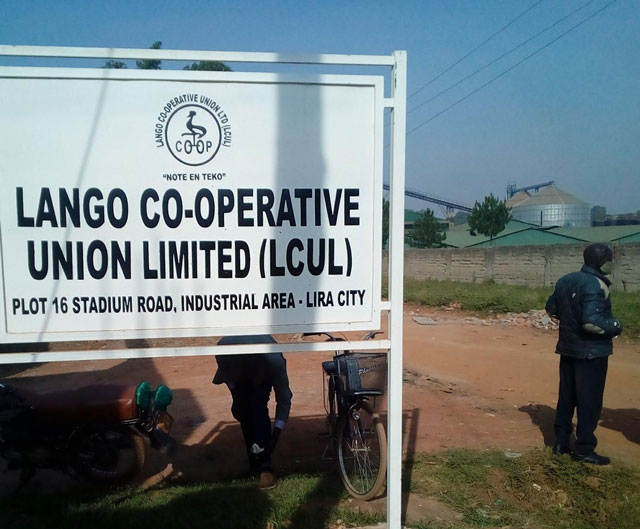
COMMENT | OSCORD MARK OTILE |The co-operative movement comprises of over 800 million people globally, and is found in almost every country. A co-operative is an association of persons united voluntarily to meet their common economic, social, and cultural needs and aspirations through a jointly owned and democratically controlled enterprise.
In Uganda, the history of the cooperative movement can be traced back to the 1920s when farmer groups operated underground because the colonial government at the time considered the emergence of cooperatives to be premature and subversive and had enacted laws that made it an offence for any financial institution to lend money to an Africa farmer. It was not until 1946 that the cooperative ordinance was enacted to legalize their operations.
Since then, a number of other laws were enacted, repealed and/ or amended. Some of these included; the Cooperative Societies Act 1952, the 1970 Cooperative Societies Act which replaced the 1963 Cooperative Societies Act, the Cooperative Societies Statute in 1991 which was later transformed into the Cooperative Societies Act 1991, Cap. 112 in the Laws of Uganda. This Act was later amended and assented to by President Y. K Museveni in November 2019. The Cooperative Societies Act is still the legislation for cooperatives in Uganda to this day.
The 1990s saw a major economic policy shift to privatization in Uganda as part of the implementation of the Structural Adjustment Programs (SAPs), largely driven by the International Monetary Fund and the World Bank. Among many other changes that happened because of SAPs was divestiture of the Cooperative Bank and the liberalization of the cash crop market.
The divestiture of the Cooperative Bank led to the collapse of many cooperatives since they did not have access to credit from a bank that had been tailor-made to suit their needs.
According to a study conducted in 2013 by the Uhuru Institute, Centre for Basic Research and Action Aid; the cooperatives had been a vital sector on which the state heavily depended for its foreign exchange and taxation needs by the end of the 1960s. By 1970, the cooperative movement had become the largest employer in Uganda.
The Ministry of Trade, Industries and Cooperatives (MoTIC) and Uganda Cooperative Alliance (UCA) have since been at the forefront to reinvigorate the co-operative movement in Uganda.
Cooperative have been diversified beyond the traditional sub sectors of coffee and cotton marketing into maize, rice, vanilla, honey, diary, apiary fruit, livestock, fishing, energy distribution, housing, industry, health, transport, consumer financial services among others.
According to information obtained from the MoTIC website, there were over 10,746 registered cooperative societies with a membership of about 4 million people by 2011. Information on the website of Uganda Cooperative Association indicates that the number of registered cooperatives in Uganda in the year 2021 stood at 18,000.
Diversification of cooperatives by the MoTIC is a welcome idea. However, given its recent revival in Uganda, one wonders whether the newly formed and revived cooperatives can function in an organized response to some of the existing socio‐economic and political–economic conditions in Uganda.
Today, most entrepreneurs as well as cooperatives find it difficult to access financial credit to boost their returns on investments and costs of production. Lending rates by commercial banks operating in Uganda are too high (between 20 to 24 per cent) in spite of Bank of Uganda reducing the Central Bank Rate (6.5 per cent as of June, 2021). Also, there is no bank that is tailor-made to suit their desired goal of causing them to thrive in a competitive environment of a liberalized economy.
Developed countries such as China have established different banks to suit the need of different sectors of the economy. For example, they have an Agricultural Bank, Export and Import Bank, and a Construction Bank and many others.
Furthermore, local investors and entrepreneurs face an unprecedented competition from foreign investors with the power balance tilted in favor of the latter.
Uganda’s third National Development Plan whose goal is to increase average household incomes and improve the quality of life of the citizens of Uganda recognizes cooperatives as central in mobilizing and organizing farm level production, value addition, marketing, savings and financial intermediation at the local level.
Therefore, a thriving cooperative society is critical for Uganda’s transformation towards an inclusive middle-income country. Low production and productivity are still a development challenge especially considering that agriculture is the backbone of Uganda’s economy.
*****
 Oscord Mark Otile is a Research Officer with the Advocates Coalition for Development and Environment (ACODE).
Oscord Mark Otile is a Research Officer with the Advocates Coalition for Development and Environment (ACODE).
oscord.otile@acode-u.org; oscord.otile@gmail.com
 The Independent Uganda: You get the Truth we Pay the Price
The Independent Uganda: You get the Truth we Pay the Price



